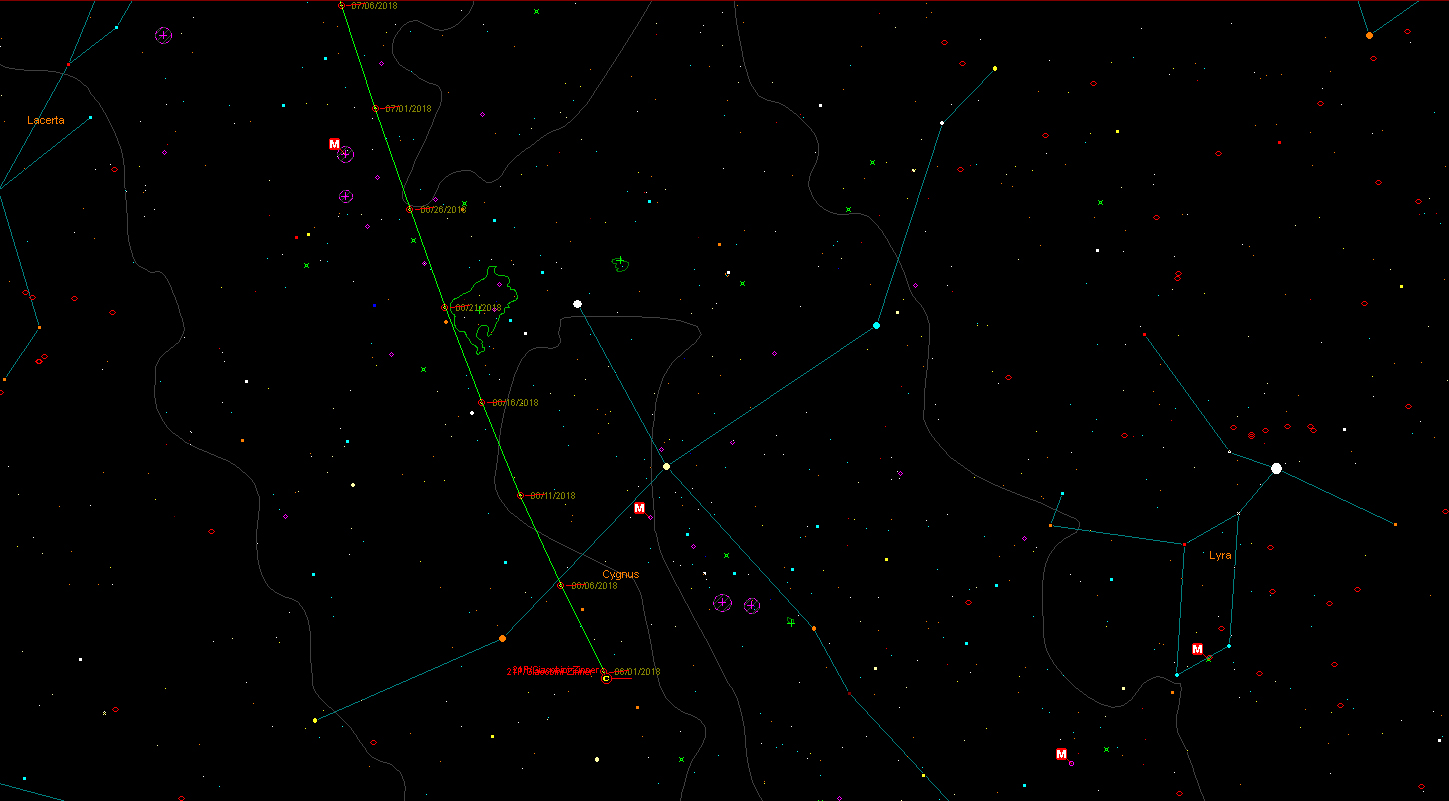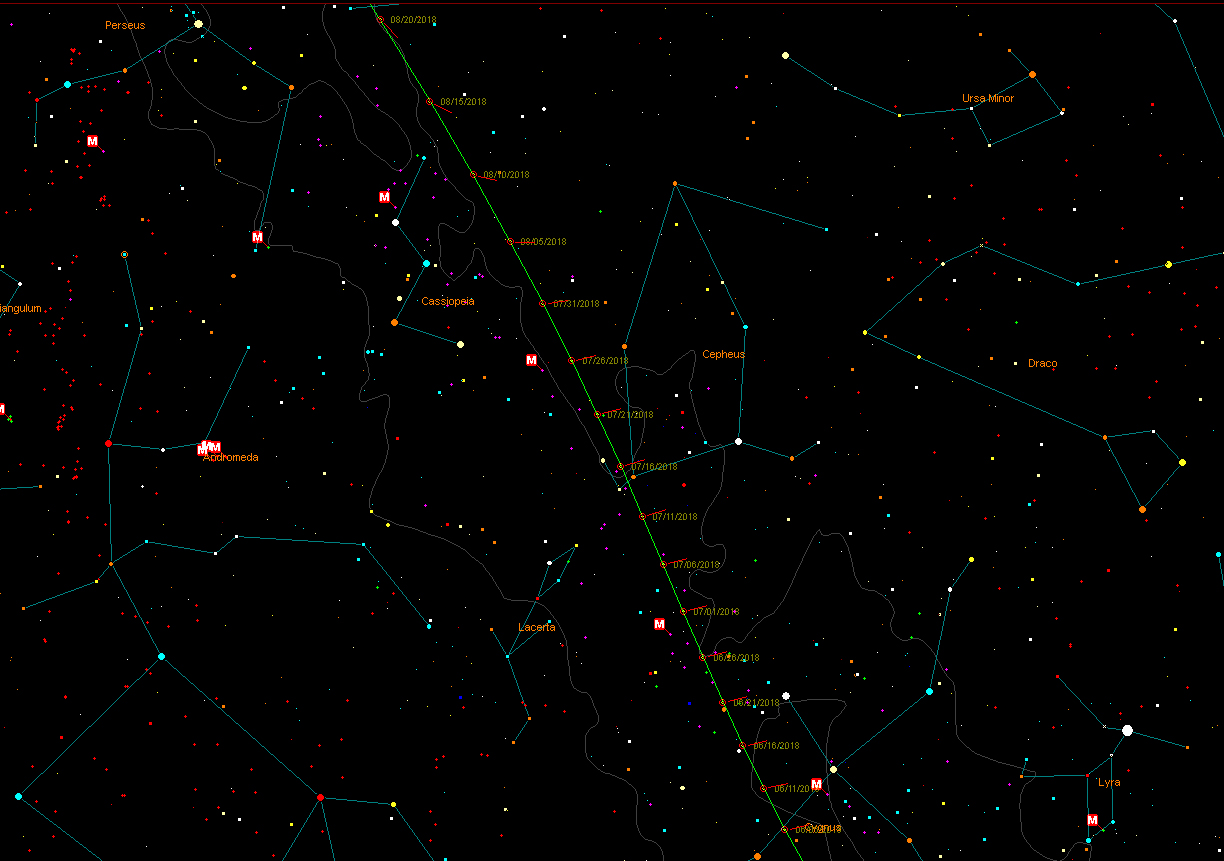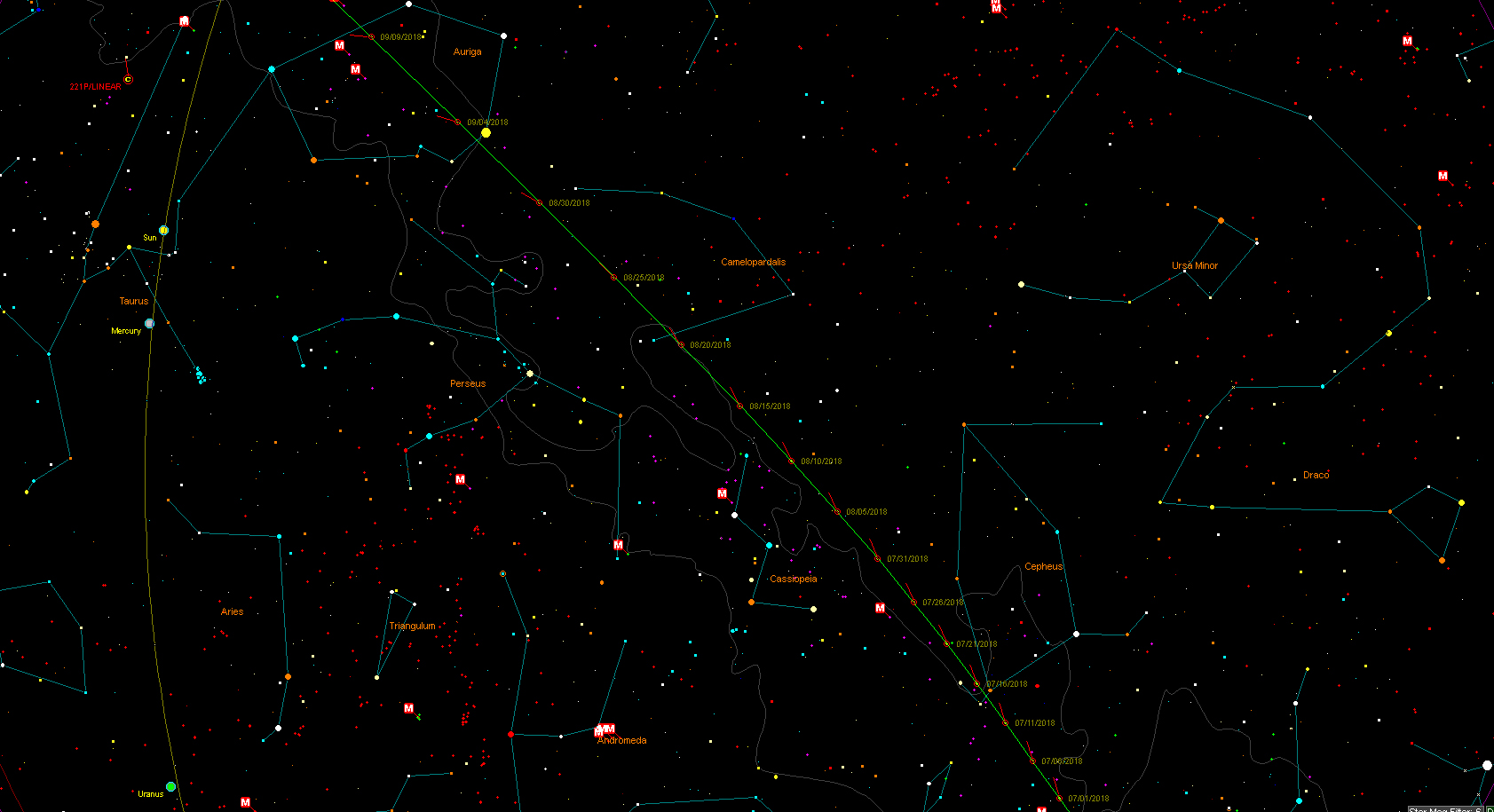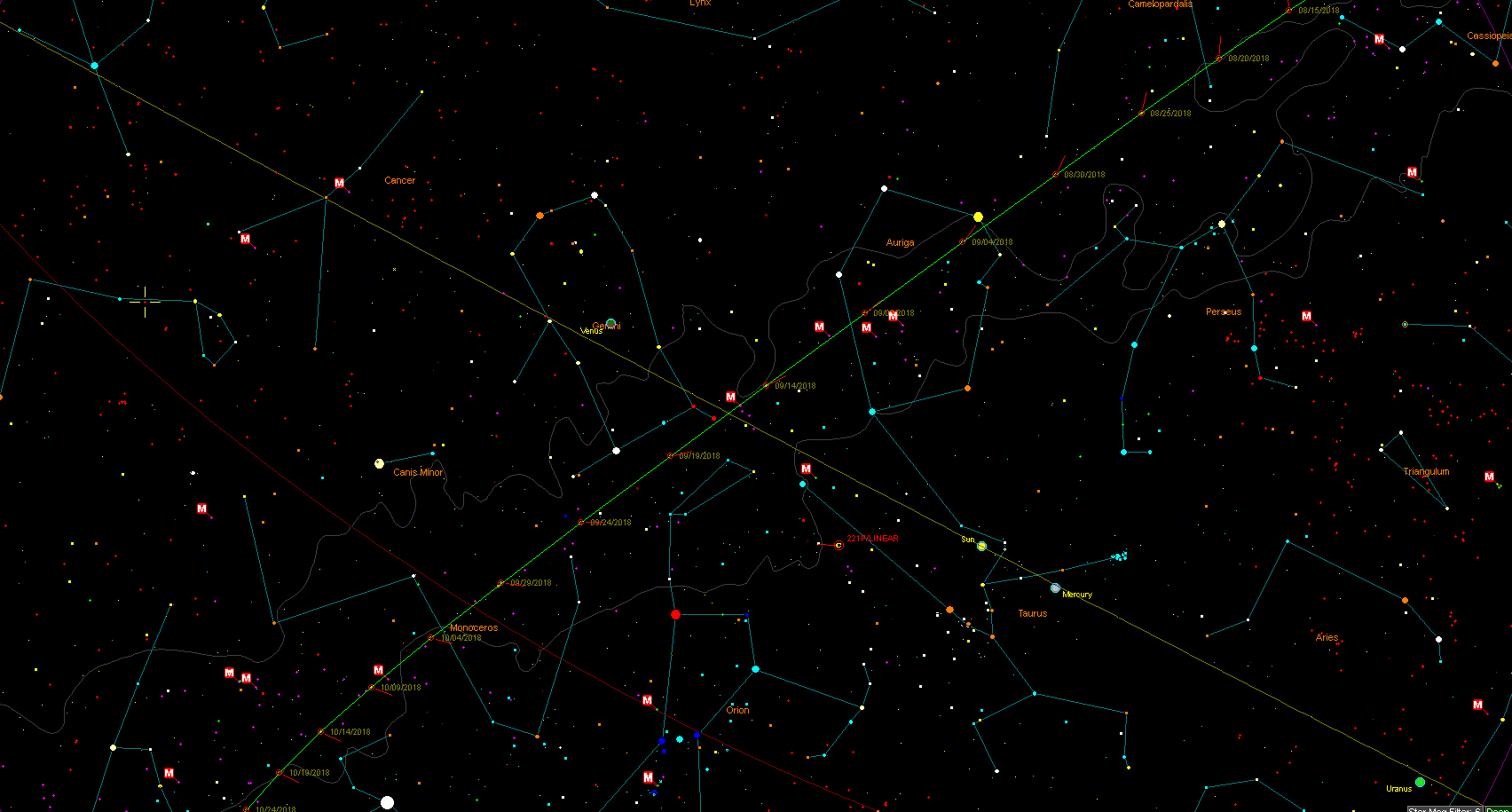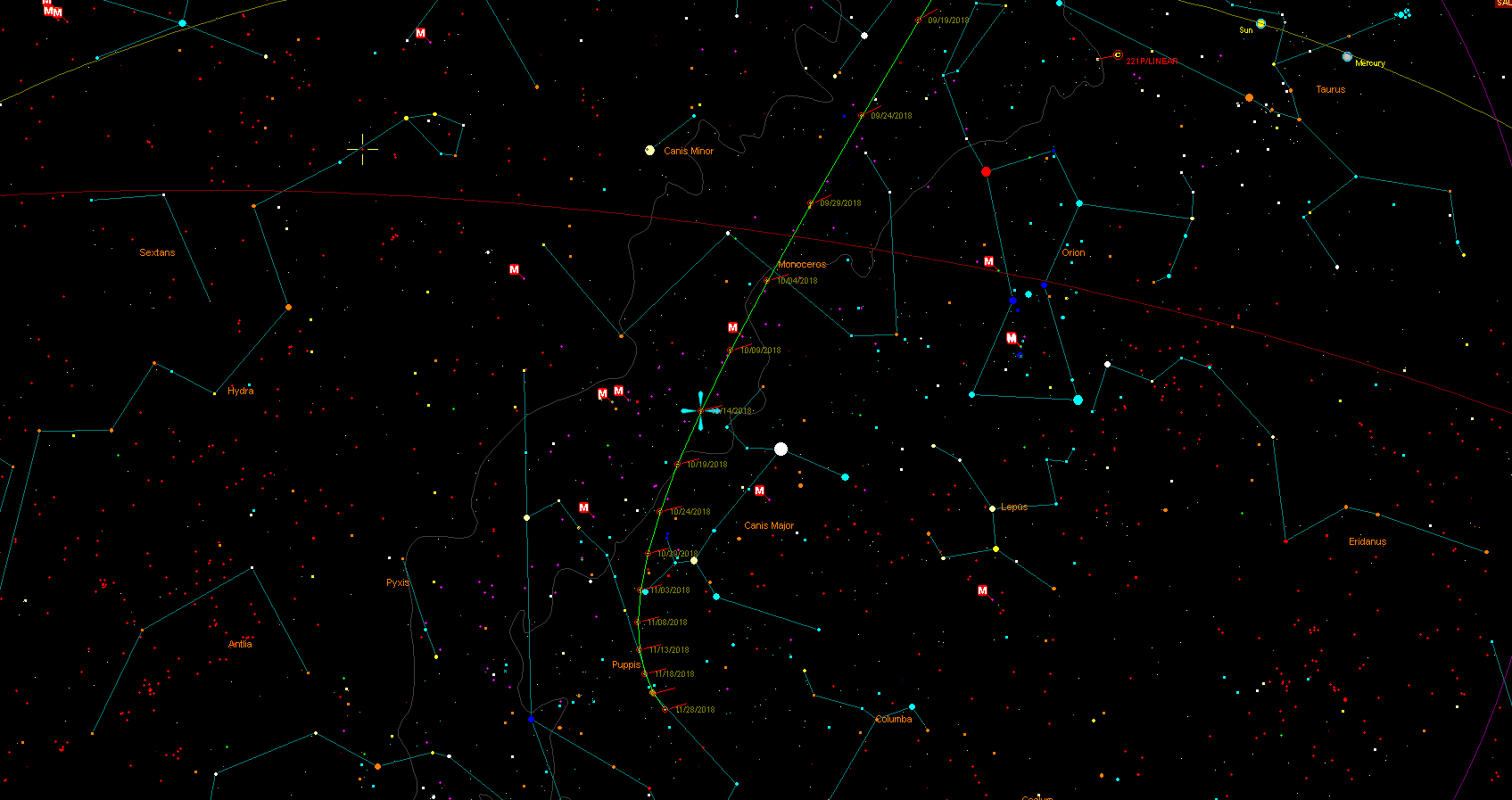Comet 21P/Giacobini-Zinner is now starting to approach Earth.
Click here to download this Observing Guide as a free PDF.
Discovered in 1990, this comet has a 6.5 year period.
The comet is currently moving through the stars of Cygnus and is currently a faint 11th magnitude, but could potentially reach naked eye visibility in September. It also passes a few bright deep sky objects in its travels.
On the 21st of June it’s the turn of The North American Nebula, also passing the open star cluster M39 towards the end of June.
All maps show the position of the comet at 0h UT on the dates shown.
Click on the maps to enlarge.
Through July, 21P moved into Cepheus, so will be a circumpolar object, always above the horizon, increasing in brightness all the time.
By August, the comet moves past Cassiopeia and Camelopardalis, as it continues to brighten. The comets apparent speed is now picking up as it approaches the Earth.
On the 3rd of September, the comet will pass very close to the 1st magnitude star Capella in Auriga, making it easier to find as it heads into the Winter constellations.
Now visible in the morning sky, it passes the following objects on the following dates:
8th September – Open Cluster M38.
9th September – Open Cluster M36.
10th September – Open Cluster M37.
15th September – Open Cluster M35 (Passing Right across the cluster).
The comet will be closest to Earth and at perihelion around this time and should be at its brightest around 6th or 7th magnitude. Don’t forget, comets are notoriously unpredictable and can often surprise us, by being brighter than expected, or let us down (yet again!).
The comet then heads southwards, passing through Monoceros.
24th /25th September – Hubbles Variable Nebula (NGC2261) and The Christmas Tree Cluster (NGC 2264.
26th / 27th September – The Rosette Nebula.
By October, the comet is now getting low down in the morning sky and fading, but as a final curtain call it passes the bright open cluster M50 on the 7th/8th of October. At this time it will only be 30° above the southern horizon just before dawn. If you are up that early to catch the comet on that morning, watch for the very thin crescent Moon rising in the eastern sky as dawn approaches.
By the middle of October the comet has faded even more, passing to the east of Sirius and slowing down as the distance from Earth increases. How long can you keep watching Comet 21P/Giacobini-Zinner as it fades?

